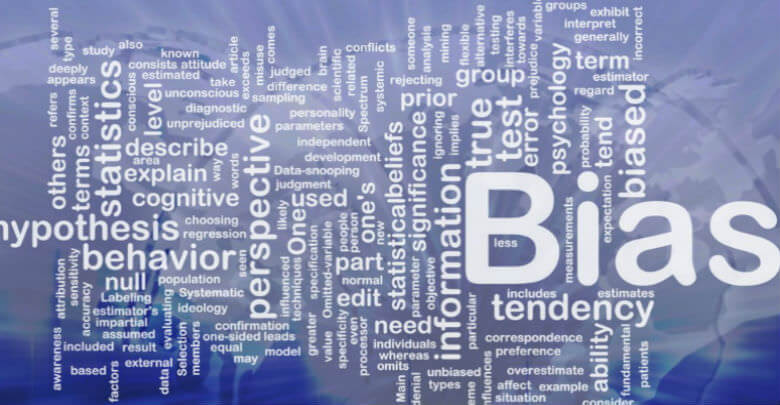 As research and insights professionals, we spend a lot of time making sure we eliminate bias from our projects. Why? So that when we deliver our analysis and insights, we are providing the most objective information possible.
As research and insights professionals, we spend a lot of time making sure we eliminate bias from our projects. Why? So that when we deliver our analysis and insights, we are providing the most objective information possible.
There are many sources of bias, including:
Participant Bias
Is there something about our instruments or in our data collection process that prevents people from being as objective and candid with us as possible? If there is, then it could be due to participant bias. There are also forms of participant bias that are really hard to control including social desirability bias.
Researcher Bias
Once we get data, we can’t help but interpret it through a lens of our own past experiences. Sometimes, those past experiences are helpful. After all, things we’ve learned from past projects and other industries we’ve worked with can be applied to the benefit of a current project. But we do have to be careful about confirmation bias: we tend to see in our data things that confirm our personal points of view and hypotheses before we see things that may not confirm that. Even as an objective researcher you can’t help but try to confirm your hypothesis.
There are ways of mitigating bias through structured and rigorous analysis, but it takes a lot of discipline.
While bias could be introduced during a research project, there’s another source of bias that comes earlier: bias that comes from the methodology and data sources that we use. Before we actually start a research project are we being biased in what methods we choose?
To determine how data and methodology agnostic you are, let’s do a mini case study.
Mini Case Study
First, look at the question below:
- Focus groups?
- Surveys?
- In-depth interviews?
- Ethnography?
While these are all viable options, they shouldn’t be your standard and only defaults.
Consider the following:
- Are there existing in-house data sets you could leverage?
- Are there other existing models of virtual reality headset this company has that already have some of these features?
buy zoloft online http://www.mrmcfb.org/images/patterns/my/zoloft.html no prescription
- Could you review sales figures to understand which of these different models have sold better or worse?
- Is there data that can help you infer which features seem to help sell a product and which ones don’t seem to have an impact?
buy zovirax online http://www.kelvintech.com/kelvintech/wp-content/themes/innotech/img/footer/new/zovirax.html no prescription
- Is there an online simulation or projective technique to help understand what people are likely to do if they were actually making a purchase of different models, some of which have different feature sets than others?
- Are there other types of research to understand the gaming behavior of your client’s customers?
- Could you have customers take video diaries of their experiences using their existing virtual reality headset and any challenges they may have using it?
buy zoloft online https://salterlewismd.com/wp-content/languages/new/zoloft.html no prescription
Lots of different options! What’s going to be the best for this case?
There’s a lot of information we don’t have in this brief exercise: We don’t know whether or not they’ve already been selling virtual reality headsets and have existing data. We don’t know if they also already have access to some secondary data. We don’t know whether or not they’re planning on using this data to create prototypes. We don’t know what their budget and timeline is. So based on all of those things, we could give a recommendation of what specific data sources and methods are likely to be the best.
By going through this exercise with a client request, you would do a good job of not defaulting to the methods that you’re most comfortable with and thus serving your client well.
If during the exercise you found yourself thinking, “This either feels like a focus group or a survey to me,” we recommend you learn about some of the new methodologies that are available so that you can bring your client all of the best options and not just to default to the ones that you have used traditionally in the market research field.
These days, our clients and business decision makers have many different data sources, specialists, and research methodologies available to them. So when a client comes to us and asks us for a project, we want to make sure that we’re being data and methodology agnostic; recommending the best data source and the best methodology, even if it’s ones that we may not be completely comfortable with!








